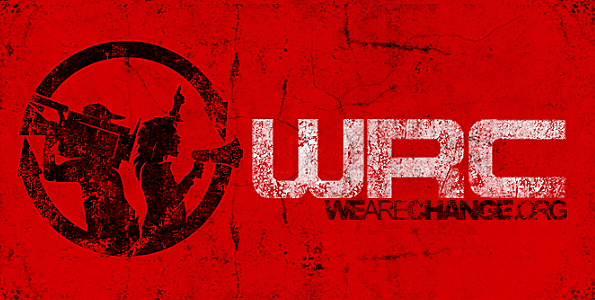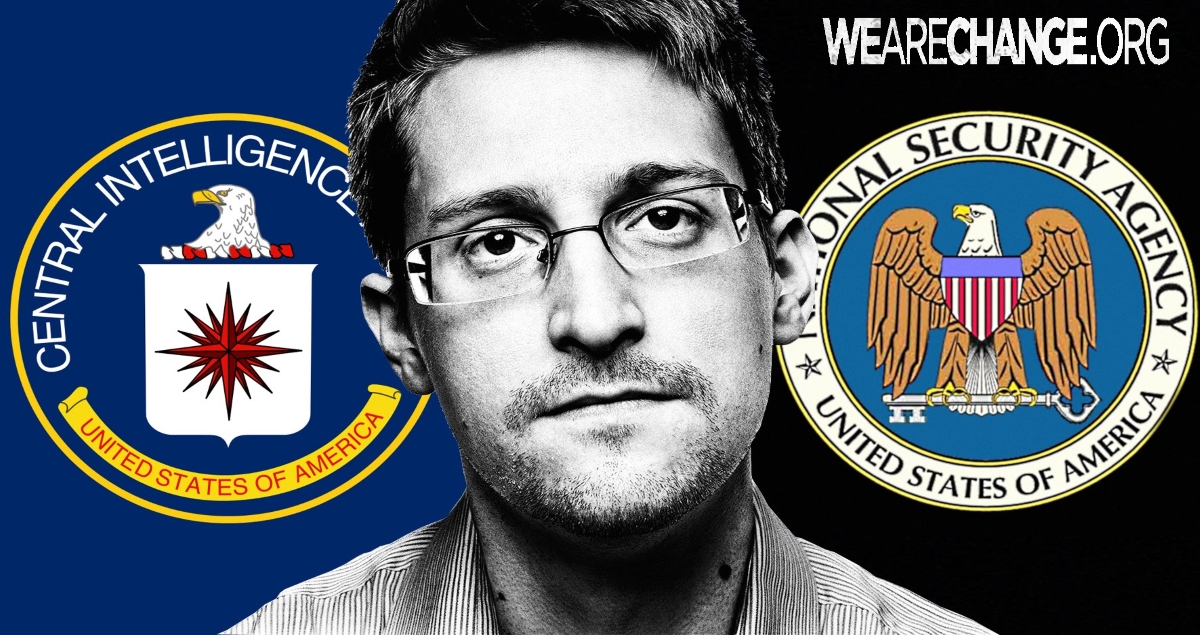
US President Barack Obama has said that Edward Snowden should have used official channels instead of taking NSA spying public. Now, a former high-ranking US government official has revealed how the Pentagon retaliates against internal critics.
John Crane doesn’t live far from CIA headquarters on the south bank of the Potomac River, with its verdant forest and rolling hills. The Pentagon is just a few miles upstream. Crane, as a child of the US military-intelligence complex, feels at home here. He served as a part of the system for more than 25 years and he still believes in it — even if it has since declared him as its enemy.Crane is sitting in his kitchen. In front of him lies a leather briefcase embossed with the US seal. He is 60 years old, though he looks younger with his slicked-back hair and neatly trimmed beard. He still wears the typical uniform of day-to-day government business in Washington: a shirt monogrammed with his initials, cufflinks and a blazer with golden buttons. It’s the way he showed up to work for more than a quarter century, when he flashed his badge to security and drove up to his office inside the complex on Army Navy Drive in Arlington, Virginia. For a long time, he could see the Pentagon, the American Department of Defense, right out his office window.
Later they moved, to a non-descript office tower a little further out, but Crane and his staff remained an important part of the Defense Department. Over the years, he made a career within the US military hierarchy. In his final role as assistant inspector general, he had finally made it up into the senior leadership ranks. Around 1,600 civil servants report to the inspector general, of whom around 90 worked for Crane until his departure. Their job is to follow up on internal problems, corruption and other violations of the law. In modern democracies, an inspector general is a kind of free safety who is supposed to ensure that the government apparatus is functioning according to the principles of the rule of law.
Crane’s work inside the Pentagon was sensitive. It was his job to deal with grievances — from small squabbles to major scandals — within the military apparatus. He was responsible for relations with Congress and, first and foremost, the US defense apparatus’ internal whistleblowing program — a kind of complaint box for the close to 3 million civilian and military employees of the Pentagon as well as for the NSA, which is subordinate to the Defense Department. He remained in the position until he began suspecting that his superiors had bent the rules in order to nullify one unwelcome whistleblower.
There’s A New Edward Snowden Whistleblower!!!
The conflict led Crane to question almost everything he had ever believed in or worked for. The man who, during his career, had attended to dozens of whistleblower cases decided to become one himself. In a new book,* and in several interviews with SPIEGEL, SPIEGEL TV and theGuardian, he has now told his story for the first time. It’s one that covers far more than just the fate of a single high-ranking Pentagon employee who was ousted from his job in 2013 as a result of a dispute with his superiors.
Not Quite So Simple
The row stems from the fact that Crane disputes the version of events still put forward today by President Barack Obama and Democratic Party presidential candidate Hillary Clinton when discussing Edward Snowden, the most prominent whistleblower of our times. Snowden didn’t have to go underground and he didn’t have to take his story public — that’s the message the US government constantly repeats. The system works, the error was made by Snowden: That has been Obama’s subtext.
In reference to Snowden, Obama says there “were other avenues available for somebody whose conscience was stirred and thought that they needed to question government actions.” Hillary Clinton has also expressed a similar sentiment during the primary campaign. Snowden “could have been a whistleblower” within the government apparatus, she said. “He could have gotten all of the protections of being a whistleblower. He could have raised all the issues that he has raised. And I think there would have been a positive response to that.”
At his home in Virginia, Crane casts his gaze across the Potomac towards the Pentagon. He knows that the truth is rather different and that things aren’t quite as simple as Obama and Clinton seek to portray them. How could Snowden have taken advantage of the internal avenues available? He wasn’t a government official. He was the employee of a private company that worked for the NSA. As such, it was unclear whether Snowden enjoyed the same legal protections as whistleblowers within the government. And even if he were, Crane has doubts today that he would have been treated appropriately.
Crane sighs and struggles to find the right words to explain his doubts. “I witnessed a dramatic example of what can happen to a whistleblower if he behaves as stipulated and turns to the official channels,” he says. Yet everything had seemed so well thought out when the government in the 1970s provided a contact point for whistleblowers within the military apparatus and the NSA.
After completing his university studies, Crane worked for a Republican Congressman named Bill Dickinson, a leading member of the Armed Services Committee. Dickinson had been one of the proponents of the idea of establishing an Office of the Inspector General. Once the position was created, Crane became one of the first employees in the office of the newly named inspector. During his career, he worked under around a dozen different inspector generals and helped build the so-called “hotlines” for whistleblowers. For Crane, whistleblowers are a pillar of the democratic system and he is convinced that they help improve the work of government.
After Chelsea Manning passed along to WikiLeaks hundreds of thousands of daily reports about the US campaigns in Afghanistan and Iraq along with diplomatic cables from US embassies around the world, Crane advocated for the establishment of a new internal system for filing complaints about classified and highly classified procedures — a system that was then realized. During his time at the Pentagon, Crane says, he had the Whistleblower Protection Act of 1978 printed in pamphlet form “so that employees in the Office of the Inspector General could read verbatim the law they were supposed to be implementing.” Crane says he sought to “make sure there would never be an Edward Snowden.”
Doubts
To this day, he has refrained from publicly endorsing the actions of Chelsea Manning and Edward Snowden. He considers Snowden’s flight and ongoing exile in Russia to be a tragedy that could have been avoided. He still believes that internal channels would have been better. The errors Crane decries are those he thinks were made by the people in charge, who he thinks failed to properly implement guidelines and laws.
John Crane first began having doubts in 2004. Shortly before, he had been promoted to the role of assistant inspector general and, as such, part of upper management. These were the years immediately following Sept. 11, 2001. The attacks on the World Trade Center in New York and the Pentagon in Washington had fundamentally changed the way US security agencies operated, with the administration of President George W. Bush massively expanding their budgets and authority.
A small group of NSA employees viewed these changes with increasing concern. They recognized that the surveillance being undertaken* also captured information about US citizens — which they believed violated the US constitution. They saw that close to $4 billion was being spent on this program alone — money that was pumped into the companies that had been contracted — and they considered it to be a waste of taxpayers’ money. They argued that an internal solution named ThinThread would have been better suited and saved billions.
The group is comprised of three former NSA employees, a former employee of the House Intelligence Committee as well as Thomas Drake, who was still employed by the NSA at the time in a leading position in its surveillance programs.
Drake turned to the NSA inspector general with his complaint. The rest of the group (Bill Binney, Kirk Wiebe, Ed Loomis and Diane Roark) complained to the office of the Pentagon Inspector General, where John Crane worked.* His staff had their own office at NSA headquarters in Fort Meade, Maryland, where signs have been hung in the hallways and elevators encouraging NSA employees to contact them if problems arise. In September 2002, an official complaint was submitted to Crane.
His inspectors met with Drake in January 2003 and repeatedly questioned him over the course of several years. Drake also delivered NSA documents to them in an effort to prove his allegations. Security staff logged each of his visits to the Office of the Inspector General. Drake felt he was under observation.
Crane’s staff contradicted the findings of the NSA officials. After a detailed examination, they deemed the concerns to be largely well-founded — a slap in the face to those responsible under then-NSA head Michael Hayden. In 2006, the US Congress voted to shut down the controversial Trailblazer program, though NSA continued its mass surveillance through other methods.
‘Extremely Unusual’
The story of the NSA whistleblower could have been a success story. But the five petitioners feared reprisals from the very beginning. Whereas four of them used their real names in their complaint, Thomas Drake only appears as a high-ranking employee from the management level — without his name, out of fear. Crane says he viewed Drake’s fear of revenge as a warning signal and found it to be “extremely unusual.” Internally, he pushed for further investigation into these concerns.
His boss rejected him. Crane was indignant. In his view, this was in violation of the rules governing the inspector general’s work. “One would think that is exactly what we should be investigating,” Crane says.
The fear was justified, as would become apparent during the summer of 2007. One morning that July, armed FBI officers raided the apartments and homes of the four whistleblowers named in the report. Four months later, they also turned up at the front door of the man who had sought to remain anonymous in the internal complaint: Thomas Drake.
Drake was a long-serving intelligence employee. For the intelligence service of the US Air Force, he once eavesdropped on radio communications from East Germany’s National People’s Army and the Stasi secret police from West German airspace. Later, he worked as an NSA contractor. His first day as a full-time employee at the agency was on Sept. 11, 2001.
Now he was being arrested by armed officers and charged under the Espionage Act of 1917 and threatened with 35 years in prison. He also lost his security clearance and, with it, his career — all because of trying to sound the alarm from the inside as a whistleblower using official channels he had trusted. Among the allegations against Drake were that he had leaked classified information to a reporter at the Baltimore Sun — a claim he denied. He also stood accused of saving an NSA document on his private computer.
Shortly before his trial was to begin, the government dropped all of the initial charges. Drake was sentenced to one year of probation and community service for the misuse of NSA computers. The judge in the case issued particularly harsh words against prosecutors, saying their actions had been “unconscionable.” Nevertheless, Drake lost his job, his pension and many friends.
READ Part 2: Shredded Documents
SnapChat: LukeWeAreChange
fbook: https://facebook.com/LukeWeAreChange
Twitter: https://twitter.com/Lukewearechange
Instagram: https://instagram.com/lukewearechange
HELP GIVE Luke a Trip To Germany -JOIN-
OPERATION INVESTIGATE BILDERBERG -2016-
Sign up become a patron and Show your support for alternative news
 We use Bitcoin Too !
We use Bitcoin Too !
READ MORE












Sign up on lukeunfiltered.com or to check out our store on thebestpoliticalshirts.com.